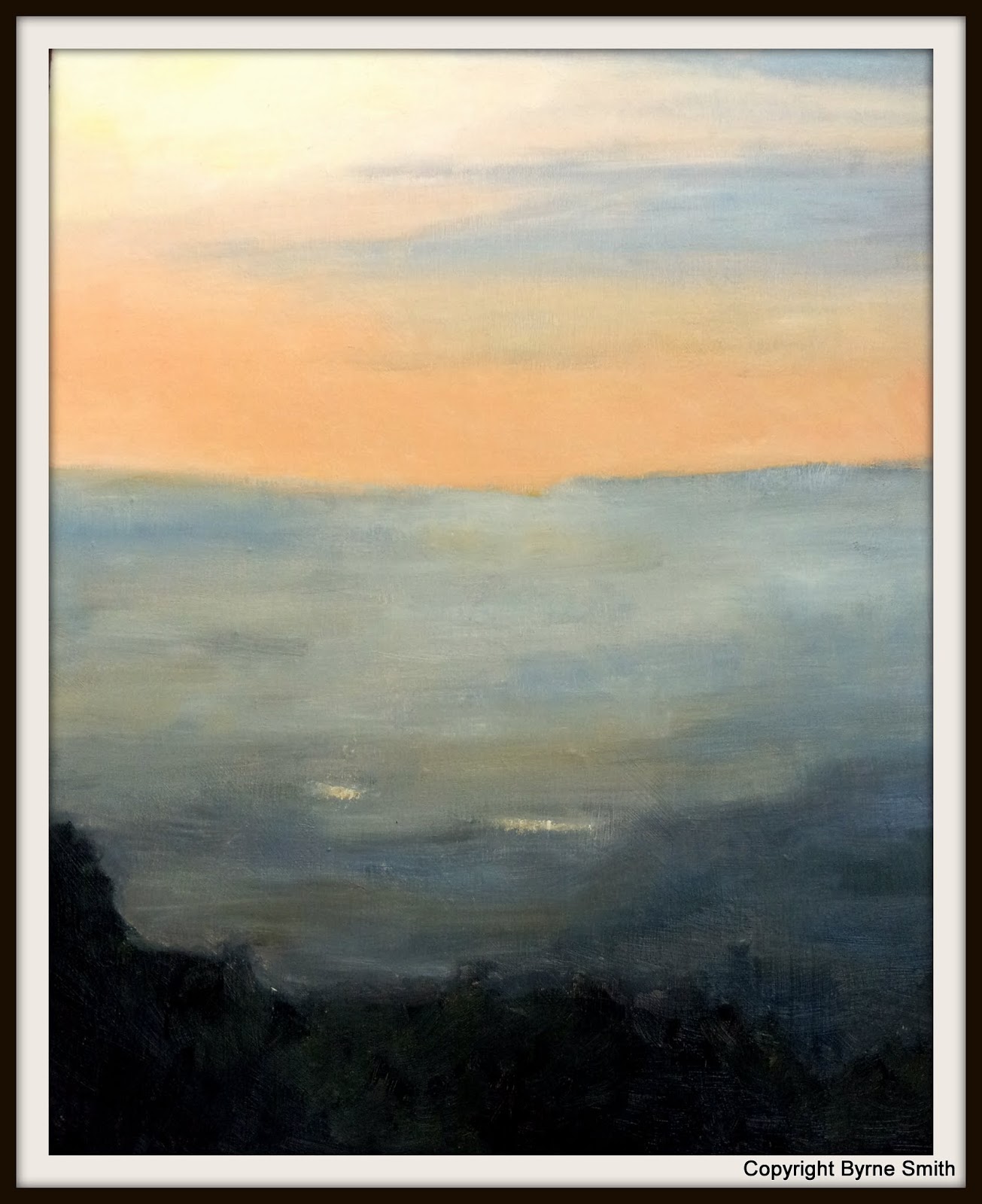 |
Would You Play Misty for Me
Acrylic on Canvas Panel
16 x 20 in/40.6 x 50.8 cm
Copyright Byrne Smith 2014 |
A slow-moving cool front, bringing with it gray, leaden skies and showers, made me want to blog about painting rain today.
I completed today's image several weeks ago and thought it very appropriate for the subject, how to paint rain. Or, perhaps, I should be more humble and say, how I paint rain (in acrylic).
Here are a few of my unwritten rules for painting rain because as all painters should know, you don't paint by rules:
- Put down an overall wash on the support in a cool neutral tone leaning toward blue.
- Depending on the type of precipitation, thunderstorms or just mist, you have to paint accompanying clouds believably; you can mix ultramarine blue, burnt sienna, and raw sienna in whatever proportion you think is correct for your dark clouds, or you can use your own concoction; add white to that to lighten the skies as needed.
- Since it's overcast when it rains, there are no sharply-defined, contrasting shadows of anything.
- Paint distant or background horizons or objects with no sharp edges; not only are the objects in the distance, they are also obscured by the rain, and the heavier the rain the less distinct the object.
- If you're painting natural ground, as in a landscape, add a few puddles of standing water and paint them lighter than the ground and approximately the same color as the sky so that it looks like the surface of the water reflecting light.
- If you're painting includes man-made objects, such as a road or sidewalk or just about any horizontal surface, you have to show the surface reflecting light; paint broad horizontal strokes, alternating with slight changes in light and dark values (in whatever color).
- Paint the darker reflection or shadow of objects vertically on man-made surfaces, but also add short, broken horizontal strokes the same color as the surrounding surface.
- Paint the lighter reflection of the sky or of any man-made lighting of any color vertically, but add short, broken horizontal strokes the same color as the surrounding surface.
-Depending on how much rain you want to show, it's OK to add various random strokes to the painting of what some painters call "noise," but remember you're painting an illusion of rain not actually painting raindrops.
I'm sure I've left something out, so please feel free to leave a comment.
Also, practice, practice practice....
























.jpg)















